Take a look at the picture below. It is the first view I had of Tryfan. Aged twenty, I had arrived at night in a van full of students taking a weekend off college to go walking. After a night in a climbing hut that groaned as the corrugated casing contracted against the wooden walls, I awoke and went outdoors for the view. The memory stays with me today, a magnificent mountain looming down on me, crystal clear in the air cleared of dust by the previous night's rain.
Tryfan is the eastern part of a horseshoe shaped corrie, Cwm Idwal. [What the Scots call a Corrie, the Welsh call a Cwm.] Look carefully and you can see a line up the mountain side. This is known as the Heather Terrace and it forms the easiest way up the mountain, a steadily ascending gentle slope that eventually reaches a Col [Bwlch Tryfan] between Tryfan and Glyder Fach, a name that means Little Glyder to compare it to its larger sibling, Glyder Fawr [Big Glyder.]
From this ridge double back on an easy scramble to the summit. However, at the top are two pillars,Adam and Eve, on one side of which there is frightening exposure and a serious drop. Adventurous lads often jump from one to the other. What lads do to impress girls! I gave that endeavour a miss.
The toughest route up Tryfan is the North Ridge which you can see see above the Heather Terrace which can involve scrambling, and there are on the ridge dangerous spots. Another route takes you up from Cwm Idwal. This is part of the Miners' Track. Welsh slate miners from the villages of Nant Francon used to work away at the slate mines near Llanberis, and at weekends they would walk home, crossing the mountain at the Col [pass, Bwlch in Welsh] between Tryfan and Glyder Fach and descending then to their homes for their much needed rest.
The view from the summit is glorious. You can see the whole range of North Wales, with Snowdon to the south and the mighty Carneddau to the North, and to the East the broad moorlands that stretch away towards England. You look down on two little jewels: the waters of Cwm Idwal and higher up the smaller lake of Llyn Bochlwyd.
From the Ridge you can sometimes see the Royal Air Force practising, using the peculiar Geography of the valley below. The Ogwen Valley, by which Tryfan and its fellows stand, turns at right angles into the valley of Nant Francon, with the river that empties from Llyn Ogwen tumbling over a series of small falls at the bend. The RAF practise sharp turns around this bend and you can often see the jets like tiny red flies below you as you stand on the rocky vantage point.
Years ago on a train I met an old woman who had grown up in the shadow of Tryfan, who told me that one of her childhood jobs on the hill farm where she was raised was to ascend Tryfan to the moorland besides it and collect whinberries, which we in England call bilberries. I got then a peek into an earlier Wales, life as it was for centuries before supermarkets. She looked a very healthy ninety plus, with a good complexion and a happy character. The outdoor life had surely been good for her.


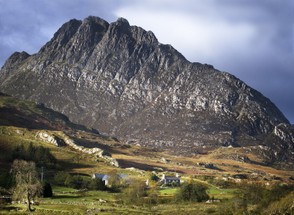
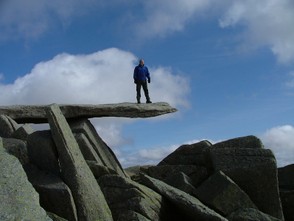
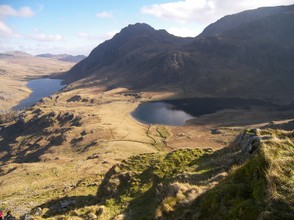



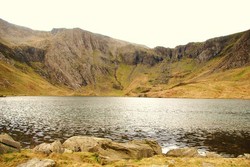

 Pilgrimage. A review16 days ago
Pilgrimage. A review16 days ago
 Leo the Fourteenthon 05/09/2025
Leo the Fourteenthon 05/09/2025
 The Melsonby Hoardon 03/25/2025
The Melsonby Hoardon 03/25/2025

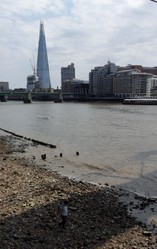
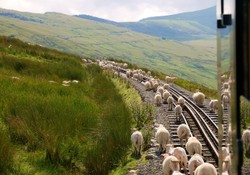
Comments
It is likely that such an effort will be made, but keeping up with changes is not easy.
Thank you!
It's sad to ponder lost names, such as a possible Welsh equivalent for Heather Terrace, and lost meanings, such as Tryfan.
It's surprising to ponder the wide range of possible meanings that online sources present.
Might there ever be an effort to present new Welsh names for places and things with only English-named survivors?
There is asvfarcasvI know none.
Thank you!
The Etymological Dictionary of Old Welsh by Alexander Falileyev associates Tryfan with try- ("very") and bann ("tip, top") even as it begins the tryfan entry on page 151 of its year 2000 edition with "limit"!
Is there any local indication as to whether or not "very high peak" (according to English Wikipedia) or "limit" or something else invokes the Welsh-intended meaning of Tryfan?
Yes, you are right, the terrafenis Heather, but
I do not know the Welsh name for the feature.
Thank you for the answer March 16, 2023, to my previous, same-day question.
The Heather Terrace sounds to me like it showcases gray-purple shades from ground-hugging vegetation.
Would it have a Welsh name different from or the same as its English moniker?
The greyish line is the Heather Terrace, one of the routes up the mountain.
The image to the left of your title has the colors in your last image of Glyder Fawr.
The computer is not cooperating about the detail other than the image looks somewhat like a gray multi-lane highway running along the side of a mountain whose peaks loom above it and its bouldery, clumpy, rocky slopes loom below it.
What would the image be of, and where would it be in this really tough -- ;-D -- walk?
I know what you mean. By writing these articles I intend to share my experiences gained over many years of enjoying nature.
The terrain views are gorgeous! However, I doubt I would be fit enough to make the trek amid the mountains and boulders, so I shall be content with pictorial views.